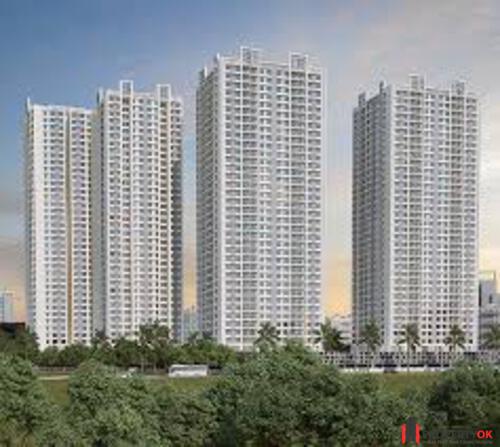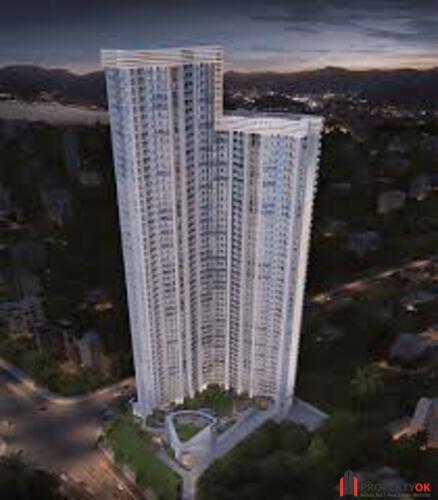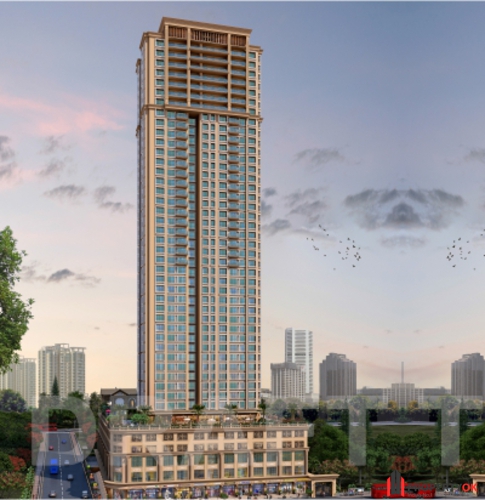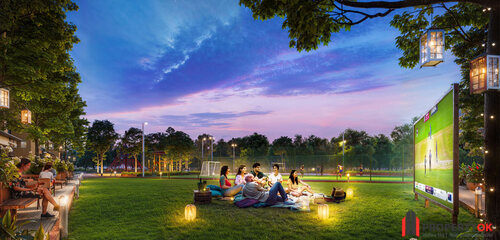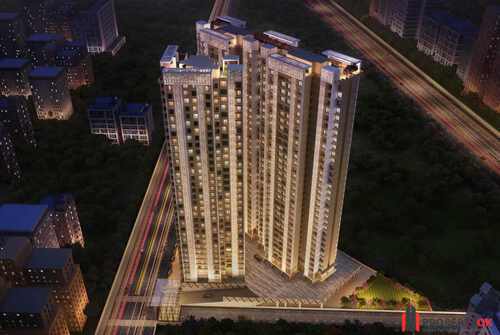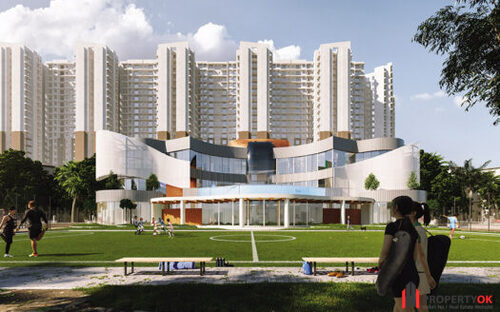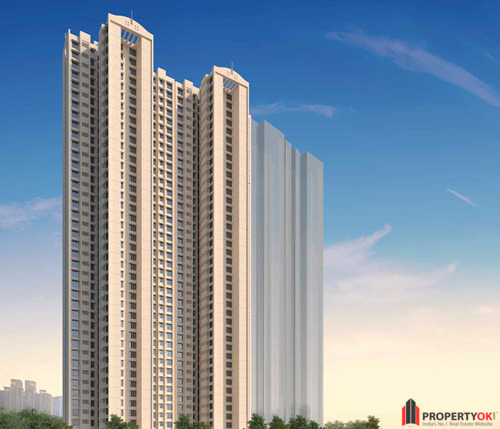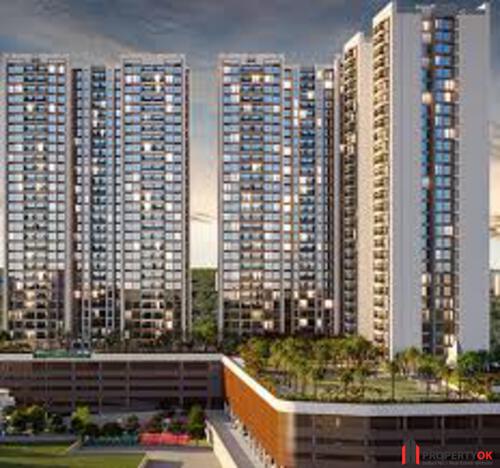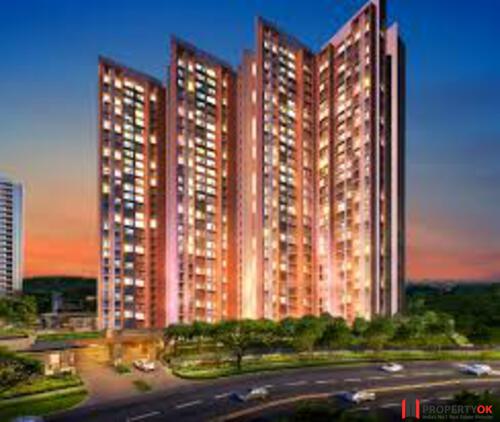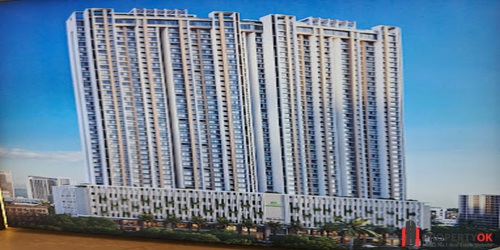In an era where environmental consciousness is paramount, the real estate industry is undergoing a revolutionary transformation towards sustainability. The concept of sustainable real estate is rapidly gaining momentum, bringing forth green trends that redefine the landscape of property development. In this comprehensive exploration, we unveil the key aspects of sustainable real estate, from eco-sensitive construction to sustainable community development, ushering in an era where green is not just a color but a commitment.
Looking for expert advice on the current real estate market? Get in touch with us now!

Understanding Sustainable Real Estate
At its core, sustainable real estate represents a paradigm shift in property development, emphasizing practices that minimize environmental impact while enhancing energy efficiency, resource conservation, and overall well-being. This section lays the groundwork by defining sustainable real estate and elucidating its overarching goals.
Importance of Sustainable Real Estate:
Explore the burgeoning importance of sustainable real estate in the contemporary property market. From addressing climate change concerns to catering to the preferences of eco-conscious buyers, understand why integrating sustainability into real estate practices is now a pivotal factor.
Preserving the Environment:
Sustainable real estate prioritizes eco-sensitive construction methods, resource-efficient designs, and energy-saving technologies. This approach contributes to the preservation of natural habitats, minimizes ecological footprints, and mitigates the environmental impact of urbanization. From green roofs that promote biodiversity to energy-efficient lighting systems, sustainable real estate practices actively contribute to the conservation of our planet.
Eco-Sensitive Construction:
Sustainable real estate emphasizes building designs that work in harmony with the environment. Features such as passive house design, which optimizes natural heating and cooling, and eco-sensitive materials that minimize the use of non-renewable resources are integral to this approach. By adopting these construction methods, developers not only reduce the environmental impact but also create structures that align with modern sustainability standards.
Energy-Efficient Solutions:
One of the core tenets of sustainable real estate is the integration of energy-efficient solutions. From solar panels harnessing renewable energy to smart home technologies that optimize energy consumption, these features not only reduce the carbon footprint of buildings but also lead to long-term cost savings for both developers and residents. The importance of sustainable energy solutions extends beyond environmental concerns, resonating strongly with economic considerations.
Promoting Healthy Living:
Sustainable real estate designs prioritize the health and well-being of occupants. Incorporating features such as improved indoor air quality, ample natural light, and green spaces within developments contributes to a healthier living environment. Residents of sustainable buildings often experience enhanced physical and mental well-being, showcasing the positive impact that sustainable practices can have on the quality of life.
Enhancing Property Value:
Sustainable real estate is not only about responsible practices during construction but also about creating assets that hold enduring value. As the demand for eco-friendly properties grows, so does their market value. Sustainable buildings are often considered more attractive to buyers and tenants, translating into a higher resale and rental value. Thus, sustainable practices become not just an ethical choice but also a savvy financial investment.

Mitigating Climate Change:
The real estate sector plays a significant role in global carbon emissions. Sustainable real estate aims to mitigate this impact by reducing energy consumption, utilizing renewable resources, and implementing climate-resilient designs. As the world grapples with the consequences of climate change, sustainable real estate emerges as a proactive solution to address environmental challenges.
Fostering Sustainable Communities:
Sustainable real estate goes beyond individual buildings; it fosters the development of sustainable communities. From walkable neighborhoods to green spaces that encourage community engagement, these developments prioritize the creation of environments that support social well-being. This approach not only enhances the sense of community but also contributes to the overall resilience of urban areas.
Meeting Regulatory Standards:
With an increasing focus on environmental regulations and certifications, sustainable real estate ensures compliance with evolving standards. Developers embracing eco-friendly practices find themselves well-positioned to navigate regulatory frameworks and meet the expectations of environmentally conscious consumers.
Attracting Responsible Investors:
Investors are increasingly recognizing the importance of sustainability in real estate. Sustainable practices can attract socially responsible investors who seek to align their portfolios with ethical and environmentally conscious initiatives. This growing investor interest further emphasizes the financial benefits associated with sustainable real estate.
Setting Industry Standards:
By championing sustainable practices, the real estate industry has the opportunity to set new standards for responsible development. This leadership not only shapes the industry’s future but also influences other sectors to prioritize sustainability. Sustainable real estate becomes a catalyst for broader societal changes toward a more environmentally aware and responsible future.
Green Real Estate: A Holistic Approach
Green real estate, also known as eco-friendly or sustainable real estate, refers to the incorporation of environmentally responsible practices throughout the life cycle of a property. From design and construction to operation and maintenance, green real estate aims to minimize its impact on the environment while promoting energy efficiency, resource conservation, and overall sustainability.
Sustainable Urban Planning:
At the heart of green real estate lies the concept of sustainable urban planning. This involves designing communities that prioritize walkability, accessibility to public transportation, and integration of green spaces. Sustainable urban planning in green real estate aims to reduce carbon footprints, enhance the quality of life, and create resilient, environmentally conscious neighborhoods.

Innovative Green Building Materials:
A cornerstone of green real estate is the use of innovative, eco-friendly building materials. From recycled steel and bamboo to sustainable timber and low-impact concrete alternatives, green building materials reduce the environmental impact of construction. These materials often contribute to better energy efficiency and healthier indoor air quality.
Energy-Efficient Design:
Green real estate places a strong emphasis on energy-efficient design principles. This includes optimizing natural light, utilizing energy-efficient appliances, incorporating passive heating and cooling strategies, and implementing renewable energy sources such as solar panels. The goal is to create buildings that consume less energy, leading to reduced utility costs and a lower carbon footprint.
Water Conservation Practices:
Water conservation is a vital aspect of green real estate. Implementing water-efficient fixtures, rainwater harvesting systems, and sustainable landscaping practices contribute to a significant reduction in water consumption. By minimizing water waste, green real estate projects play a crucial role in preserving this precious resource.
Green Certifications and Standards:
To validate their commitment to sustainability, green real estate projects often seek certifications from reputable organizations such as LEED (Leadership in Energy and Environmental Design), BREEAM (Building Research Establishment Environmental Assessment Method), or other regional green building standards. These certifications provide a benchmark for environmental performance and encourage continuous improvement.
Promoting Healthy Indoor Environments:
Green real estate prioritizes the health and well-being of occupants. By using non-toxic, low-VOC (volatile organic compound) paints and finishes, implementing proper ventilation systems, and ensuring ample natural light, these projects create indoor environments that support the physical and mental health of residents.
Waste Reduction and Recycling:
Minimizing construction waste and promoting recycling are integral to green real estate. Construction sites often implement waste reduction measures, such as sorting materials for recycling and repurposing. Additionally, green real estate encourages residents to adopt sustainable waste management practices, contributing to overall environmental conservation.
Smart Technology Integration:
The integration of smart home technologies is a hallmark of green real estate. From energy-efficient lighting systems that adapt to occupancy patterns to smart thermostats that optimize heating and cooling, these technologies enhance energy efficiency, reduce utility costs, and provide residents with greater control over their environmental impact.
Resilience and Long-Term Value:
Green real estate projects are designed with longevity in mind. By focusing on durability, resilience to climate impacts, and adaptability to changing environmental conditions, these developments offer long-term value to both residents and investors. The emphasis on sustainability ensures that green real estate remains relevant and valuable in the face of evolving environmental challenges.
Read this blog to find out The Top Investment Destinations: Best Cities To Invest In Real Estate In India
THE TOP INVESTMENT DESTINATIONS: BEST CITIES TO INVEST IN REAL ESTATE IN INDIA
Eco-Sensitive Construction: Building for the Future
Eco-sensitive construction, also known as environmentally sensitive construction or green building, refers to a set of practices that prioritize minimizing the environmental impact of the construction process and the resulting structure. It involves conscientious choices in design, material selection, construction methods, and ongoing maintenance to create buildings that align with ecological principles.
Site Selection and Planning:
One of the fundamental aspects of eco-sensitive construction is thoughtful site selection and planning. This includes assessing the environmental impact of construction on the chosen site, considering factors like soil erosion, water conservation, and preservation of local ecosystems. By choosing sites wisely, eco-sensitive construction minimizes disruption to natural habitats.

Energy-Efficient Design:
Eco-sensitive construction places a strong emphasis on energy-efficient design. This involves optimizing building orientation for natural light, incorporating well-insulated walls and roofs, and using energy-efficient windows and doors. The goal is to reduce the reliance on artificial lighting and heating, ultimately lowering energy consumption and minimizing the carbon footprint.
Use of Sustainable Building Materials:
The choice of building materials is a critical aspect of eco-sensitive construction. Opting for sustainable, recycled, or locally sourced materials helps reduce the environmental impact associated with transportation and extraction. Additionally, eco-sensitive construction promotes the use of materials that have a longer lifespan, contributing to durability and reduced waste.
Water Conservation Practices:
Water conservation is integral to eco-sensitive construction. Implementing water-efficient fixtures, rainwater harvesting systems, and permeable landscaping are common practices. By minimizing water consumption, eco-sensitive construction contributes to sustainable water management and helps preserve this precious resource.
Waste Reduction and Recycling:
Minimizing construction waste and promoting recycling are essential components of eco-sensitive construction. Construction sites are managed to sort and recycle materials, diverting them from landfills. This commitment to waste reduction not only contributes to environmental conservation but also aligns with the principles of a circular economy.
Natural Ventilation and Cooling Strategies:
Eco-sensitive construction prioritizes natural ventilation and cooling strategies to reduce the need for energy-intensive air conditioning. This may include designing buildings with cross-ventilation, incorporating green roofs for insulation, and utilizing landscaping to provide shade. These strategies enhance the comfort of occupants while decreasing energy consumption.
Biodiversity Preservation:
Preserving biodiversity is a key consideration in eco-sensitive construction. Projects aim to minimize disruption to local ecosystems, protect natural habitats, and even incorporate features like green corridors or wildlife-friendly landscaping. By prioritizing biodiversity, eco-sensitive construction contributes to the overall health of ecosystems.
Life-Cycle Assessments:
Eco-sensitive construction involves conducting life-cycle assessments to evaluate the environmental impact of a building from construction to demolition. This comprehensive approach considers factors such as energy use, material sourcing, and waste generation. Life-cycle assessments guide decision-making to ensure that eco-sensitive principles are applied throughout a building’s existence.
Certifications and Standards:
To validate their commitment to eco-sensitive practices, construction projects often pursue certifications from recognized green building standards such as LEED (Leadership in Energy and Environmental Design) or BREEAM (Building Research Establishment Environmental Assessment Method). These certifications provide a benchmark for environmental performance and demonstrate a commitment to sustainable construction.
Conclusion
In conclusion, the rise of sustainable real estate marks a pivotal moment in the evolution of property development. From environmental considerations to social impact, the industry is undergoing a transformation that prioritizes not just profit but a commitment to creating a more sustainable and resilient future. As we continue on this path, the integration of innovative technologies, international collaboration, and a deep understanding of social and environmental dynamics will be crucial in shaping the future landscape of sustainable real estate. It’s not just about building structures; it’s about constructing a legacy that harmonizes with the planet and enriches the lives of those who inhabit it.
Gain valuable insights into eco-friendly practices, innovative designs, and the future of green living. For a comprehensive selection of sustainable real estate options, visit our website. Dive into a world where environmental consciousness meets architectural innovation. Make your investment not just in a property but in a greener, more resilient tomorrow. Elevate your understanding of sustainable living and investment choices with Property OK.
Trending Properties
FAQs
1. What is sustainable real estate, and how does it differ from traditional real estate?
Sustainable real estate focuses on minimizing environmental impact, promoting energy efficiency, and creating healthier living environments. It differs from traditional real estate in construction methods, design principles, and long-term ecological considerations.
2. How does eco-sensitive construction contribute to sustainable real estate?
Eco-sensitive construction employs methods that prioritize environmental sensitivity, such as using recycled materials and modular construction. This approach aims to reduce carbon footprints, enhance energy efficiency, and promote overall sustainability.
3. What are the key features of a passive house design in sustainable real estate?
Passive house design emphasizes energy efficiency, airtightness, and optimal insulation. Buildings following this design philosophy aim to consume minimal energy for heating and cooling, leading to improved indoor air quality and reduced environmental impact.
4. How can sustainable real estate contribute to social well-being?
Sustainable real estate contributes to social well-being by creating inclusive spaces, promoting accessibility, and engaging with local communities. These projects go beyond individual buildings, fostering a sense of community and prioritizing the needs of diverse populations.

 Thank You
Thank You
